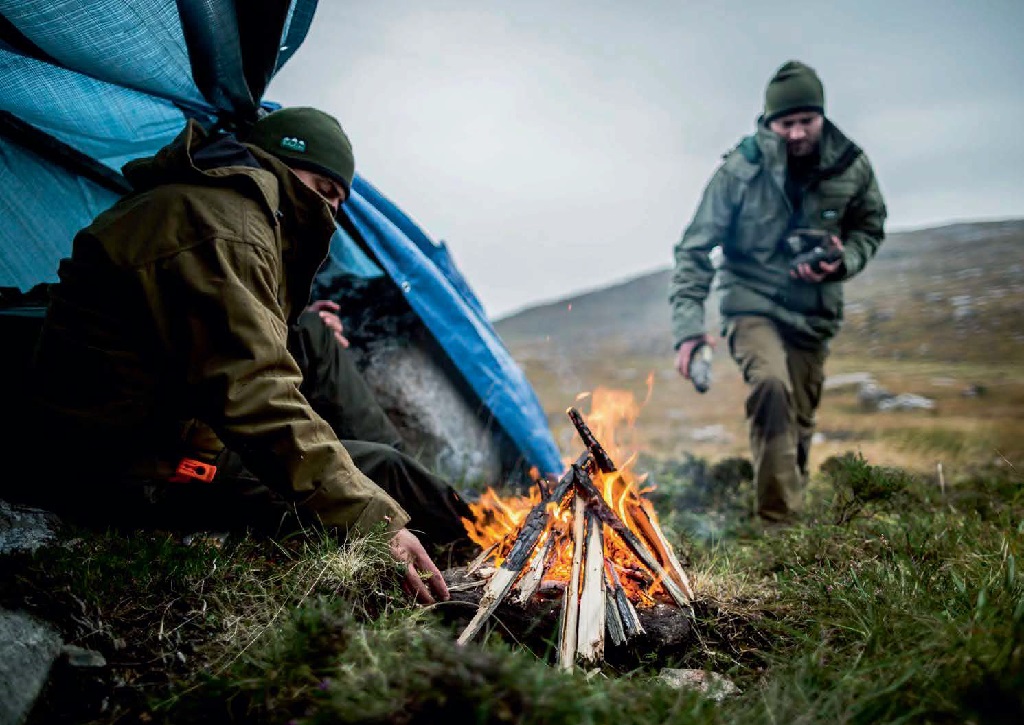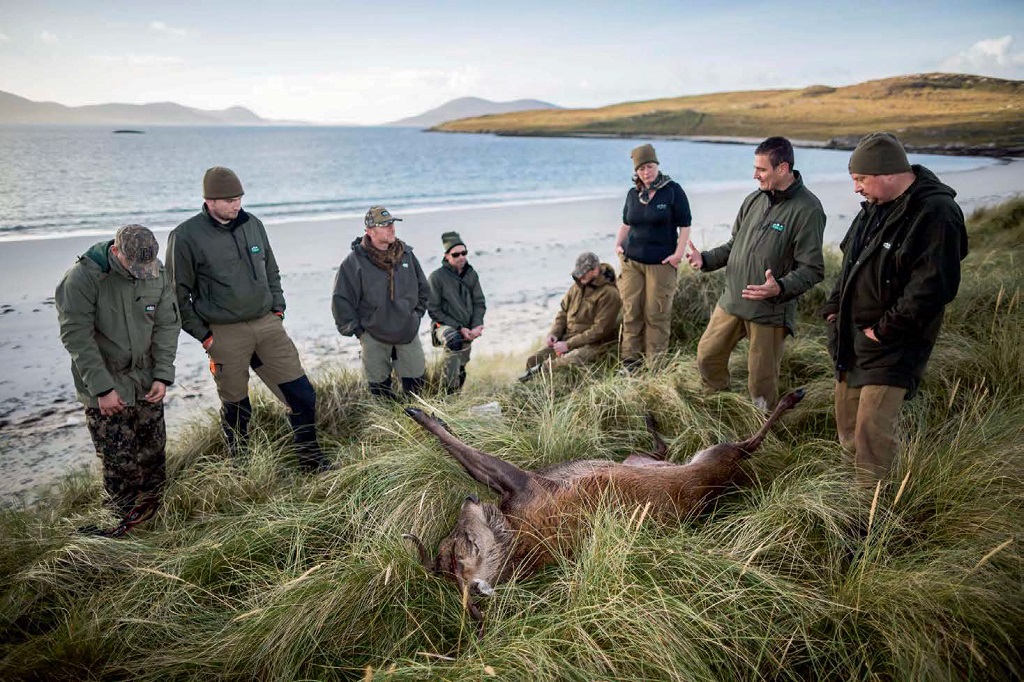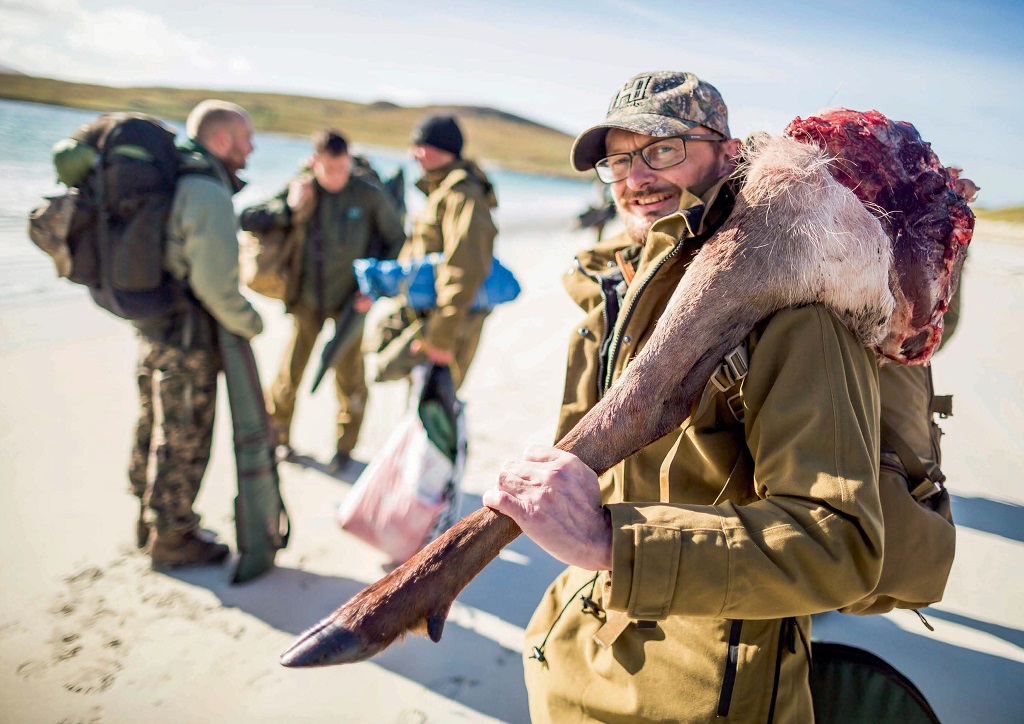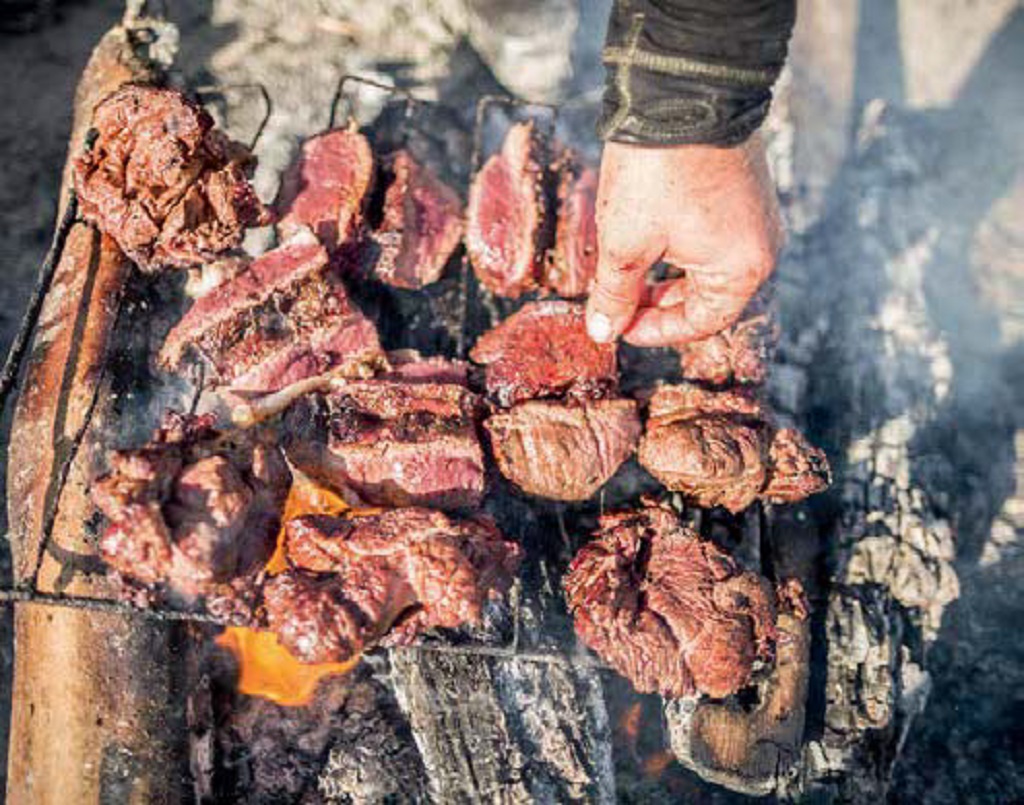![Fieldsports3 A fire was made from driftwood [Photo: Tweed Images]](https://www.scottishfield.co.uk/wp-content/uploads/2021/02/Fieldsports3.jpg)
Surviving in a storm on a Scottish island
Could a posse of shooting writers survive being unexpectedly stranded on remote Taransay during a hurricane with no food or shelter for three days?
I unwittingly took part in a hunting trip with a surprising twist. Not to overstate matters, but it changed my life.
I had signed up to go red stag stalking on the Isle of Taransay, an uninhabited island that I had been told was of unequalled beauty – but the organisers were very sketchy about the exact itinerary.
After a night spent in unadulterated luxury at the five-star Borve Lodge on the Isle of Harris, we were taken to Taransay aboard an eccentric landing craft named The Verley Anne. A leftover from the Falklands War, it certainly aroused the inner explorer in me.
The bleak, treeless Isle of Taransay consists of 3,500 acres of picture-perfect white sandy beaches, rolling machair meadows and gargantuan volcanic rocks. One of 140 uninhabited islands which dot the Scottish shoreline, it’s the only one to boast a herd of red deer, with around 50 resident stags, 100 hinds and 40 calves.
It was only once the flat-bottomed boat had deposited our small group on the rocky north shoreline that the organisers delivered the game-changing piece of news which revealed the true nature of the trip. It turned out we were participating in a social experiment – we were now marooned on the island for three days and two nights with just the clothes we were wearing, a knife and our rifles. No tents. No sleeping bags. If we wanted shelter we would have to find or make it. If we wanted to eat, then we had to hunt.

A fire was made from driftwood [Photo: Tweed Images]
With a career of training survival skills to the British Special Forces, Conrad was ideally suited to safeguard our return to the mainland and, more importantly, teach us some new skills. The idea was to stretch us as hunters and to make us think.
What if you had an accident when hunting in the middle of nowhere? What if your transport broke down? What if you got lost? Could you survive in the great outdoors with limited resources until you were rescued or reached safety?
After the initial shock had subsided, our merry band set about finding vessels for drinking water, items from which to fashion a shelter and a suitable place for our base camp. With the tail end of Hurricane Joachim set to hit the island in a matter of hours, there was no time to waste. After combing the beach’s rich spoils of flotsam and jetsam, we had enough driftwood to make a fire, some tarpaulin to make a basic shelter and an old biscuit tin for boiling water.
We each had a Sauer 404 rifle teamed with a Leica Magnus scope and Hornady ammunition, and a hunting party was sent out in search of the first night’s meal.
The trio searched until nightfall, but the deer were extremely skittish as they were pre-rut, and alas, laboured in vain. With venison off the menu we settled for the memory of the previous night’s gourmet feast. None of us had ever felt so deflated.

Survival expert Conrad Allen [Photo: Tweed Images]
Thankfully situations like that don’t happen very often. Be that as it may, I have read of hunters being stranded in the wilderness when a trip takes an unexpected turn for the worse.
Our experience, albeit simulated, got me thinking. There’s a lot more to being able to survive in the wilderness than you may think. Conrad’s guidance and techniques – so obvious once he’d explained them to us – were genuine lifesavers and made us realise how under-prepared we would have been without his knowledge.
Day two started still and misty, as if the previous night had been imagined. But as the light levels increased we saw that our base camp was completely destroyed.
Nevertheless, a new day brought renewed hope. Another hunting party went out to find some well-needed protein while the remainder of the group set about starting a fire and scavenging the shoreline for anything edible. Limpets, small crabs and seaweed were soon being boiled into a broth.
Back on the hill the stalkers were still out of luck, and after five gruelling hours of swirling wind and bad fortune it was apparent they would return empty-handed once more. With spirits at an all-time low, Conrad decided to move us to a derelict fisherman’s bothy which would provide better shelter.

Simon K Barr [Photo: Tweed Images]
By the time we arrived at the bothy the light was beginning to fade. Yet again, the deer detail drew a blank, however there was renewed optimism as a large group of stags were seen at last light in close proximity to the bothy. It was decided by committee that before first light, French hunter Julien Gingembre would get into position on the dunes above where the deer were last seen and spring an ambush upon the stags.
I slept as well as could be expected in an old fishing net fashioned into a hammock, before, drawn by the sounds of roaring red deer, leaving the relative shelter of the bothy.
It was an atmospheric moment. The light revealed a 40-strong herd of reds corralled by a lone stag. His roars sent shivers down our spines. Just 150 yards from him, we watched as his breath caught the early morning light. Lying in the tussocks strewn with droppings, Julien unfolded the bipod and positioned the rifle in front. The herd was unaware of our presence.

The barbecue [Photo: Tweed Images]
Unbeknown to us, the rest of the group had watched the spectacle unfold from the bothy. After the deer dropped, they erupted into cheers, whooping and screaming. We shared the task of gralloching and butchering the meat, before cooking it over a driftwood fire on the beach. I was so hungry I ate raw venison.
Although I did not actually pull the trigger, it was the stalk of a lifetime and about as satisfied as any of us had ever been to see an animal felled. Instead of killing for a trophy or herd management, we had been hunting as a necessity. We knew we were going to be picked up, but no food for three days really focuses the mind. Could you handle the pressure? It is far tougher than you think.
I surprised myself, though. I was able to dig very deep and hunt when there was zero in the tank. But the whole, incredible experience highlighted just how under-prepared I was. For someone that enjoys hunting in remote locations,
I have been lucky to have never needed proper survival skills. If I were you, I’d take action. Go on a survival course or, at the very least, read a book – as remote as the chance may be, your life could depend on it.
TAGS

